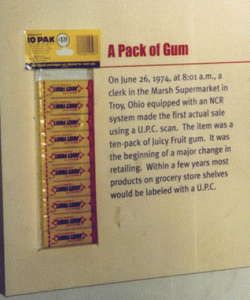Let’s agree that 99% of people in the United States no longer think about or use the Dewey Decimal system on a daily basis. I know that as a kid in school, it was a key part of survival. But I’m unsure that it’s essential now with digitized content. It was a huge innovation it was first developed in 1876. When you think about all the world’s libraries and millions of books assimilating to a single system of universal order, your appreciation for Dewey grows. The Dewey Decimal system is all about relative position versus absolute. This means that before the system was introduced, books were assigned a fixed location in the library based on the date the book was acquired and its height. At the time, only the most privileged were allowed access to libraries so you didn’t have mass numbers looking for books. Dewey’s system grouped books by topic and how they were related to each other. We take for granted the end product - which is that every library allows sorting and finding books by topic in a relatively easy format. It allows someone to walk into a section of relevance and discover other likeminded books. We take for granted what a world without that innovation of order would be like. It seems simple, but imagine if you had an animal biology book, next to Shakespeare, next to a Paula Dean cookbook - nightmare!
Google achieved something similar for the Web. Before Google, we had indexes, like Yahoo, where webmasters could manually submit their website with category and description, often for a fee. You’d have to search through these indexes by category to find your desired content. It was a mess. Google allowed the backlinks between websites to serve as votes of importance and relevancy to create a logical order to all information that is digitized. We can’t imagine the world today without Google and search engines. It’s absolutely critical to most people’s daily lives.
Then we think about retail and the billions of products sold around the world. It wasn’t until the 1970’s that a non-profit called GS1 (Global Standards 1) was formed. They created a universal registry for manufacturers and retailers, building a system, via barcodes, to be introduced. Prior to GS1 and the barcode system, there was no universal way to track products other than manual observation and counting. They have now expanded their system to include multiple versions of coding systems including QR and RFID. Imagine if every item in the world was non-standard like global shoe sizes. This group ensures that there is one set of IDs that are used.
Norman Joseph Woodland and Bernard Silver are most often credited as having originally invented the barcode on October 20, 1949 by filing patent application serial number 122,416. Though Woodland and Silver pioneered the concept of a symbol and a reader, it was not until 1974 that the first UPC Bar Code was actually used in a supermarket.
 The first item sold after being scanned with a UPC barcode was a 10-pack of Wrigley’s Juicy Fruit Gum, at a price of 67 cents. The sale occurred at 8:01 a.m. on June 26, 1974 at the Marsh Supermarket in Troy, Ohio. The gum is now on display at the Smithsonian Institution’s National Museum of American History in Washington D.C.
The first item sold after being scanned with a UPC barcode was a 10-pack of Wrigley’s Juicy Fruit Gum, at a price of 67 cents. The sale occurred at 8:01 a.m. on June 26, 1974 at the Marsh Supermarket in Troy, Ohio. The gum is now on display at the Smithsonian Institution’s National Museum of American History in Washington D.C.
In my mind, the GS1 standards and coding systems allow for universal recognition of a manufactured product, but there is no Dewey Decimal system for retail. Take shopping malls for example. When you walk in, you follow posted maps to various stores, and it most cases, you continue that process until you find what you’re looking for. It’s sounds rather reminiscent of the indexes before Google, doesn’t it? Luckily visual merchandisers break products out into logical sections like home goods, men’s and women’s clothing and from there you simply browse. Ideally, you see the things you need to find or you can ask a store associate for help. We take this experience for granted as the way it could and should be, but that’s only because we don’t know any differently.
If you think about the Internet and digital evolution, we should demand the experience of Google for retail in the physical world. I should be able to search for all red t-shirts in a mall and see on my device exactly what is offered in each store and be led to the product. Clothing should not just be in sections, but ordered as outfits on mannequins that are relevant to my interests across brands. If every barcode represents a webpage and every mall represents an index, how can I find everything that’s relevant to me inside the walls of stores? How can we have a system of backlinks to help us organize retail across brands? We’re working on some ideas. What are yours?